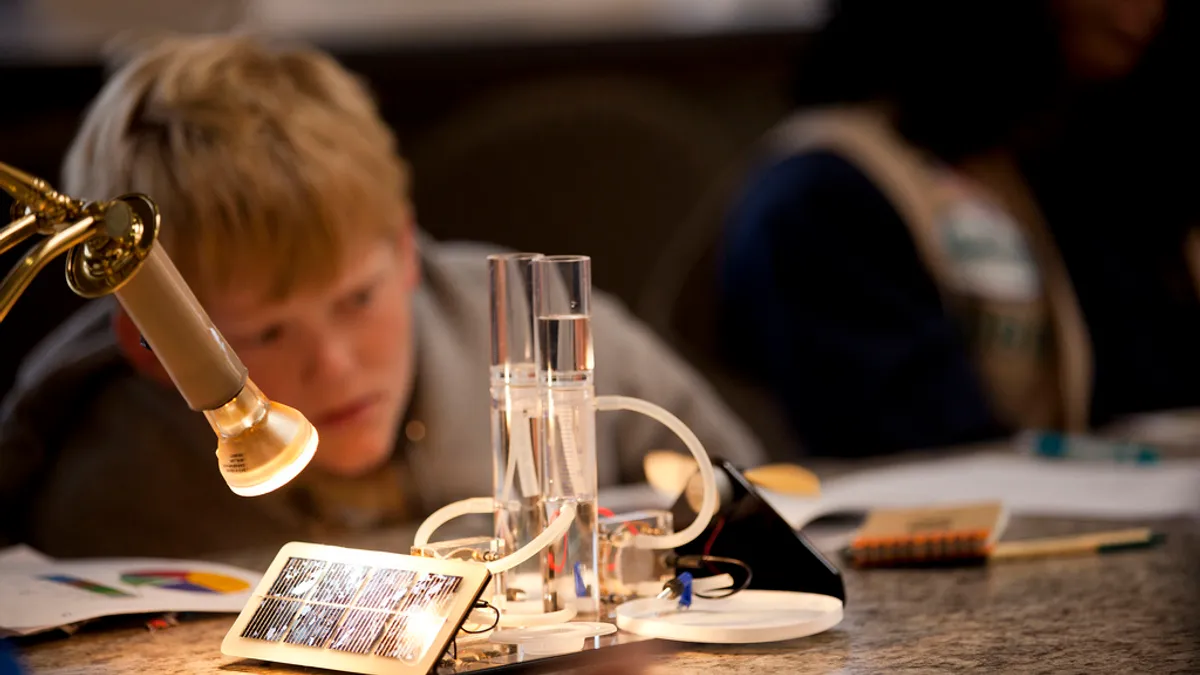A large part of the United States' focus of late on producing college- and career-ready students has been on science, technology, engineering, and mathematics (STEM) education.
The jobs using skills in those subjects are seen as a huge part of the nation's economic recovery and future as it continues to recover from the 2007 recession and the financial crisis that followed. The July jobs report showed a continuing "respectable" trend upward despite not being as impressive as June (209,000 jobs added compared to 298,000), and 1.5 million jobs have been added in the last six months. Furthermore, the most recent U.S. Job Openings and Labor Turnover report found 4.6 million job openings on the last business day of May.
According to Tom Joseph, senior director of worldwide education at Autodesk, a 3D design, engineering, and entertainment firm that offers free software to K-12 and higher ed, concentrating on STEAM (he adds an "A" for the arts) subjects alone isn't necessarily enough to prepare students for those positions. Equally, if not more, important are what he refers to as "Deeper Learning" and "Design Thinking," methods of teaching that focus on critical thinking, problem solving, and practical learning.
We caught up with Joseph to find out more.
EDUCATION DIVE: You advocate for "Deeper Learning." How exactly do you define this, and how does it compare to the focus on STEM learning?
TOM JOSEPH: Deeper learning refers to the knowledge, skills, and dispositions that all students need to succeed in our evolving and increasingly connected, fast-paced economy.
This range of knowledge and skills, or “deeper learning,” includes: critical thinking and problem solving, collaboration, effective communication, self-directed learning, mastery of core academic content, and an “academic mindset” or belief in oneself, that schoolwork is relevant, and that learning will pay off.
Deeper Learning is about the skills, and STEAM is about important subjects that are relevant to our economy. The ultimate aim is to produce graduates who are able to collaborate, think creatively, and effectively solve problems.
At Autodesk, we believe an important part of creating deeper learning environments is to ensure that technology in the commercial world finds its way into today’s classrooms.
What do you see as the skills most needed by companies? Is it more important that students be well-versed in a few core subjects or that they be more well-rounded?
JOSEPH: The U.S. jobs report data shows a discrepancy between available jobs and candidates qualified for them, and that what is missing is not just in the core subjects, such as STEAM, but in the skills needed to succeed in the workplace.
Today, when Fortune 500 companies are asked to rank the most valued skills for new employees, they list teamwork, problem solving, interpersonal skills, and oral communication at the top – all deeper learning skills.
Autodesk believes that Design Thinking, which involves a process of inquiry, ideation, and implementation, has a critical and related role to play in inspiring and equipping students with the hands-on problem solving, and the 21st century and deeper learning skills, that they need to be industry-ready.
Is it a mistake to put too little focus on things like arts education when trying to produce creative graduates?
JOSEPH: It’s interesting you should ask that because that’s why Autodesk believes in putting the "A" in "STEM" to focus on STEAM education.
However, with that said, it’s not so much about the subject matter, but the approach taken and the skills that can (and should) be learned through each academic activity.
At the heart of Deeper Learning and Design Thinking is advancing a new culture of learning that builds hands-on problem solving and 21st century skills that will put the next generation workforce in a stronger position to achieve their personal and career success.
Is there danger that, with too much focus on technology, students potentially won’t get enough opportunities to collaborate with one another and build those essential skills?
JOSEPH: That really depends on the technology in question. In fact, the opposite is true when we think about the application of cloud-based design software tools in the classroom.
Take the eighth graders from Swanson Middle School in Arlington, VA, for example. Students in technology class are using Autodesk Fusion 360 to design a prosthetic device for a member of the community who can't use his hands to be able to communicate via a touchscreen computer.
This means they need to understand the root of the issue, create and continually improve on iterations of their digital model, and then test their ideas by prototyping their design using a 3D printer. Because the software is cloud-based, the students can work on their projects from home. If these students are already designing usable prosthetic devices in the eighth grade, just imagine what they will be able to create when they leverage their software and design thinking skills down the road.
This story is part of our newly expanding K12 coverage. If you would like to subscribe to the Education Dive: K12 newsletter, click here. You may also want to read Education Dive's look at 4 K-12 textbooks that bred controversy.







 Dive Awards
Dive Awards














